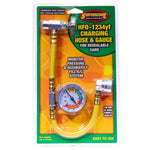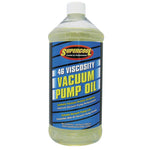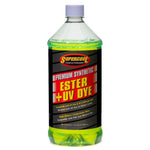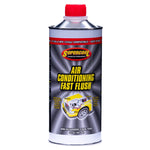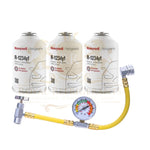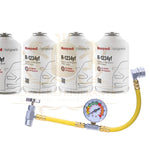You have no items in your shopping cart.
Everything You Need to Know About Converting R22 to 134a for HVAC and Automotive Applications
With the phase-out of R22 refrigerant due to its ozone-depleting properties, many HVAC technicians and vehicle owners are looking for safe and efficient alternatives. One of the most common replacements is R134a, a hydrofluorocarbon (HFC) refrigerant that is more environmentally friendly and widely available. This article explains everything you need to know about converting R22 systems to use R134a, including why conversion is important, the process involved, and key considerations for HVAC and automotive applications.
What Is R22 Refrigerant?
R22, also known as HCFC-22, was once the industry standard for air conditioning and refrigeration systems. It offered excellent cooling performance and was widely used in residential, commercial, and automotive systems. However, due to its ozone depletion potential (ODP) and environmental impact, R22 production was phased out under the Montreal Protocol. As a result, existing systems either require retrofitting or replacement to operate with more sustainable refrigerants like R134a.
What Is R134a Refrigerant?
R134a (tetrafluoroethane) is a widely used HFC refrigerant known for its zero ozone depletion potential (ODP) and lower environmental impact compared to R22. It is commonly used in automotive air conditioning systems, refrigerators, and newer HVAC units. Although it has a higher global warming potential (GWP) than newer options like R1234yf, it remains one of the most practical and cost-effective alternatives for retrofitting older systems.

Why Convert R22 to R134a?
There are several reasons why converting your R22 system to R134a is a smart move:
- 🌱 Environmental Compliance: Meets international environmental standards by eliminating ozone-depleting refrigerants.
- 💸 Cost Efficiency: R22 prices have skyrocketed due to limited supply, while R134a is widely available and affordable.
- ⚙️ Extended Equipment Life: Retrofitting allows you to continue using your existing HVAC or automotive system instead of replacing it entirely.
- 🧰 Easier Maintenance: R134a is easy to handle, and spare parts and lubricants are readily available.
Step-by-Step Guide: Converting R22 to R134a
1. System Assessment
Before starting, inspect the HVAC or automotive system to ensure it is in good condition. Check for leaks, worn components, and compatibility issues.
2. Recover R22 Refrigerant
Use certified recovery equipment to safely remove all R22 refrigerant from the system. It is illegal and environmentally harmful to vent R22 into the atmosphere.
3. Flush the System
Clean out the system to remove any traces of old refrigerant and mineral oil. R134a requires polyester (POE) oil, which is not compatible with the mineral oil used in R22 systems.
4. Replace Lubricant
Add the correct amount of POE oil to the system. This ensures proper lubrication and compatibility with R134a.
5. Install New Service Ports (if needed)
R134a uses different service fittings than R22. Replace the old ports to prevent accidental mixing of refrigerants.
6. Vacuum and Leak Test
Evacuate the system with a vacuum pump to remove moisture and air. Then, conduct a leak test to confirm system integrity.
7. Charge with R134a
Carefully charge the system with the recommended amount of R134a refrigerant. Follow manufacturer guidelines to avoid overcharging or undercharging.
Important Considerations
- ⚠️ Capacity Reduction: R134a may have slightly lower cooling capacity than R22. Adjustments may be needed to optimize performance.
- 🧪 System Compatibility: Not all R22 systems are suitable for R134a conversion. Consult with a certified technician before proceeding.
- 🔧 Legal Compliance: Ensure all conversion work meets local environmental and safety regulations.
Applications of R134a in Retrofitted Systems
- Residential and Commercial HVAC: Retrofitted air conditioning units operate efficiently and sustainably.
- Automotive AC Systems: Older vehicles originally designed for R22 can be converted to use R134a with proper modifications.
- Refrigeration Units: Commercial refrigeration systems can continue operating with minimal performance loss.
Conclusion
Converting R22 to R134a is a practical, eco-friendly, and cost-effective solution for extending the life of your HVAC and automotive systems. While the conversion process requires careful handling and proper equipment, the long-term benefits — including regulatory compliance, environmental responsibility, and lower costs — make it a worthwhile investment. Always consult a qualified HVAC technician or automotive professional to ensure a safe and efficient retrofit.
 English
English

